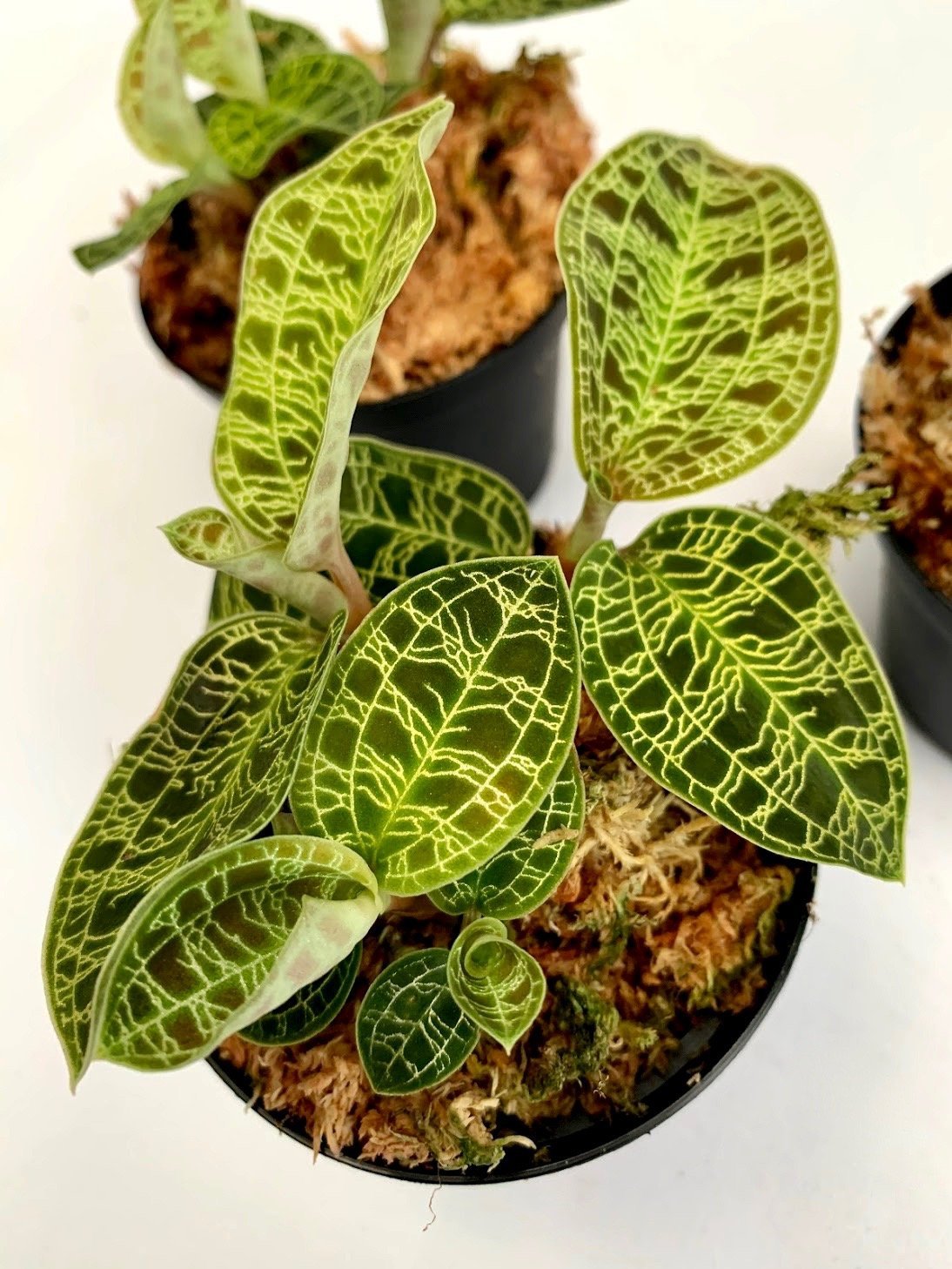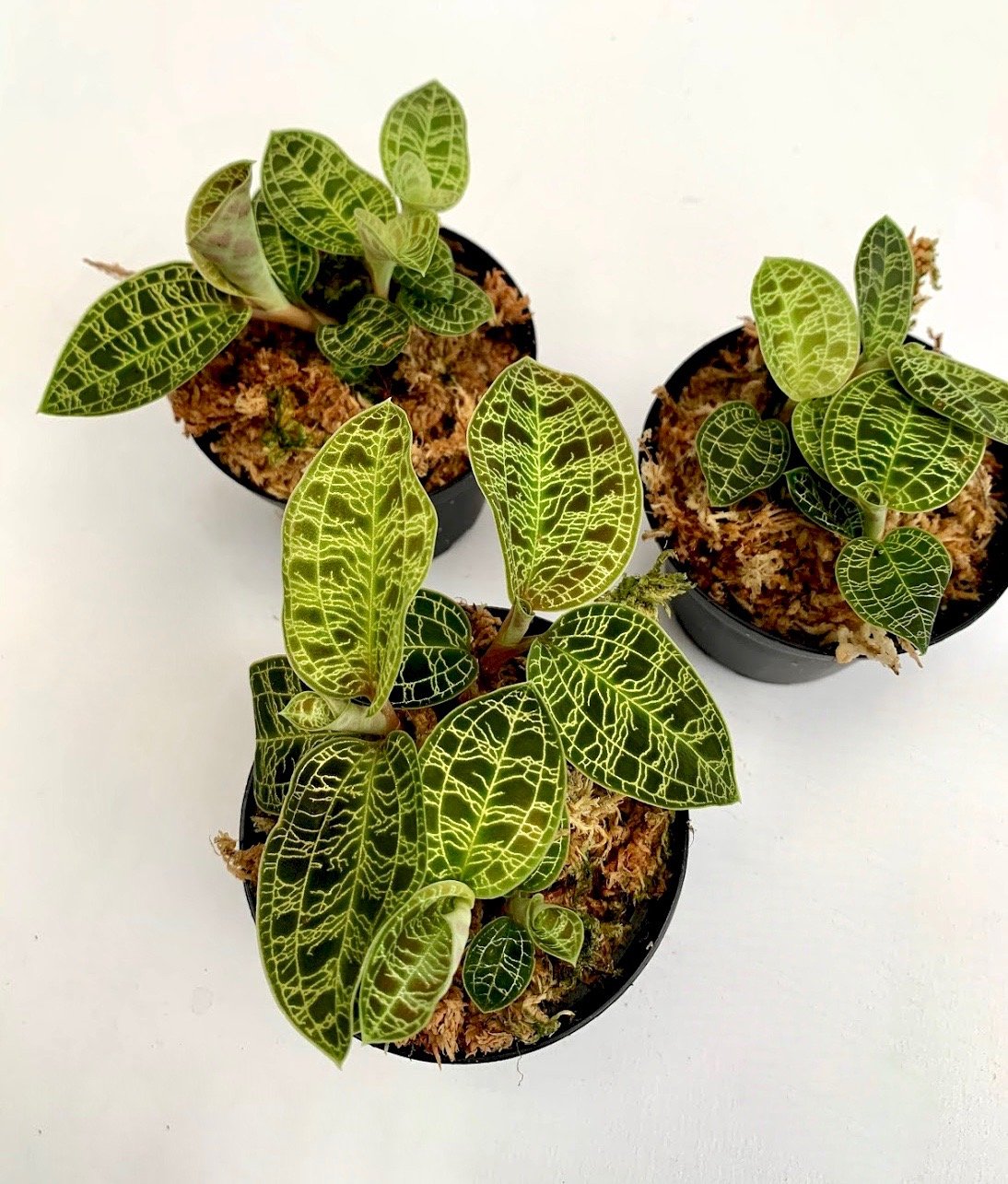Care advice
We strongly advise against using potting soil for the Macodes Petola. Peat or coconut fiber is much better for a Macodes, especially because of its sensitivity to moisture. We wrap the small plants in Sphagnum. This is because these are airy materials. It is also important to let the plantlets dry out a bit before watering again. The substrate should never be completely dry! For these plants osmosis water is best, this is highly purified water.
Characteristic leaves
The Macodes petola can of course be recognized by the unique golden sparkle on the veins of the leaves. You can see this sparkle well when the sun shines on it.
Myth from Java
There is an old Javanese legend about this little plant. A beloved goddess descended from heaven and went among the people. She wanted to bring joy to people on earth. She was divinely beautiful and veiled in a shiny silk cloth, laced with gold thread. The people laughed at her and chased her away to the forest. In this flight, her beautiful cloth tore and pieces of it stuck to branches and fell on rocks. Because of this, the people who chased her away saw who she was and begged for forgiveness. The goddess did not yield to this, flipped her cloth and returned to heaven. The pieces of her veil were scattered throughout the forest and these turned into plantlets with the golden glow of silk and veins of celestial gold threads. Still these little plants with leaves full of gold and silver can be found in the jungles of Indonesia; to this day. These are considered gifts from heaven there.
Origin
Macodes petola is native to Java, Malaysia, Sumatra, Borneo, the Philippines and the southern islands of Ryukyu. In Java, this orchid grows throughout the island in swampy forests, where the dry season is not very long. They are usually rather shady places at altitudes of 300-1400 meters. In Malaysia, it is found in several places in lowland forests and at moderate altitudes in the hills north of Pinang.
In Sumatra, it is found in numerous locations from the north to the south of the island, and on nearby islands, at altitudes up to 1600 m. In Borneo, it is found in Kalimantan and Sabah, where it grows mossy rocks, in forests, at altitudes of 100-1500 m, and it was also recently found in Sarawak in the Serian district, just south of Kuching, at an altitude of 600 m. In the Philippines, it is found at an elevation of about 300 m on Luzon Island in the provinces of Laguna and Quezon and on Mindanao Island in Agusan Province.
It is an evergreen, small-sized plant that grows in soil. Macodes petola has a fleshy creeping rhizome that disappears into a loose wreath of leaves. The oval leaves grow to 12 cm long and 7 cm wide. The dark green leaves have many golden, net-like veins.
Flowering
The plant blooms in autumn. The upright flower stem, growing up to 20 cm tall, bears about 15 small flowers. The flowers are about an inch in size. They are reddish brown with a white lip.
Care
Temperature
It is a thermophilic plant so it likes heat. Throughout the year the average temperature is 21.5-29 degrees Celsius and the average night temperature is 16.5-19 degrees Celsius. The plants should not be exposed to direct sunlight. A constant strong movement of air is desirable.
Watering
The plants should be watered abundantly, especially during active growth. The substrate should never be allowed to dry up completely.
Humidity
Macodes petola needs the humidity of 70-90% most of the year, and during 3 summer months it drops below 85%.
Drainage
The plant needs a substrate that drains water as well as possible.We recommend sphagnum, that is what they are in at our place.
Nutrition
During active growth, plants should be fertilized with some orchid fertilizer every week. You can use balanced fertilizer throughout the year, but they especially need calcium, which is why we recommend the flowering stimulant fertilizer.
Rest period
Watering in winter can be reduced slightly, especially in darker locations. However, never let it dry up completely. If watering decreases, fertilization should also be reduced.











